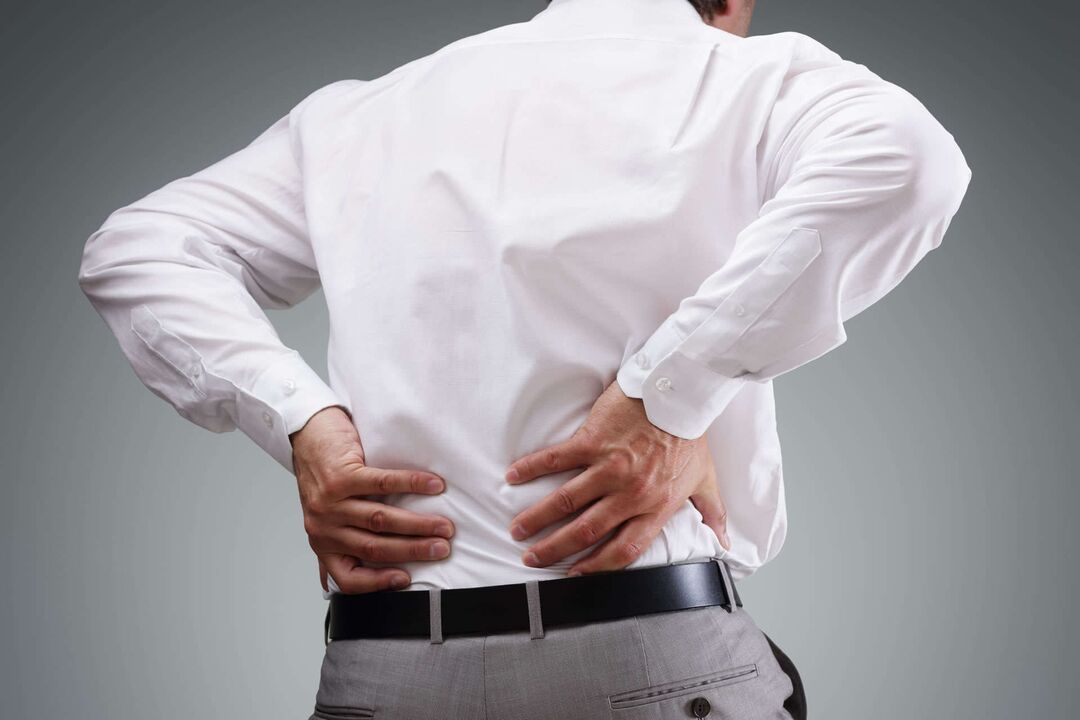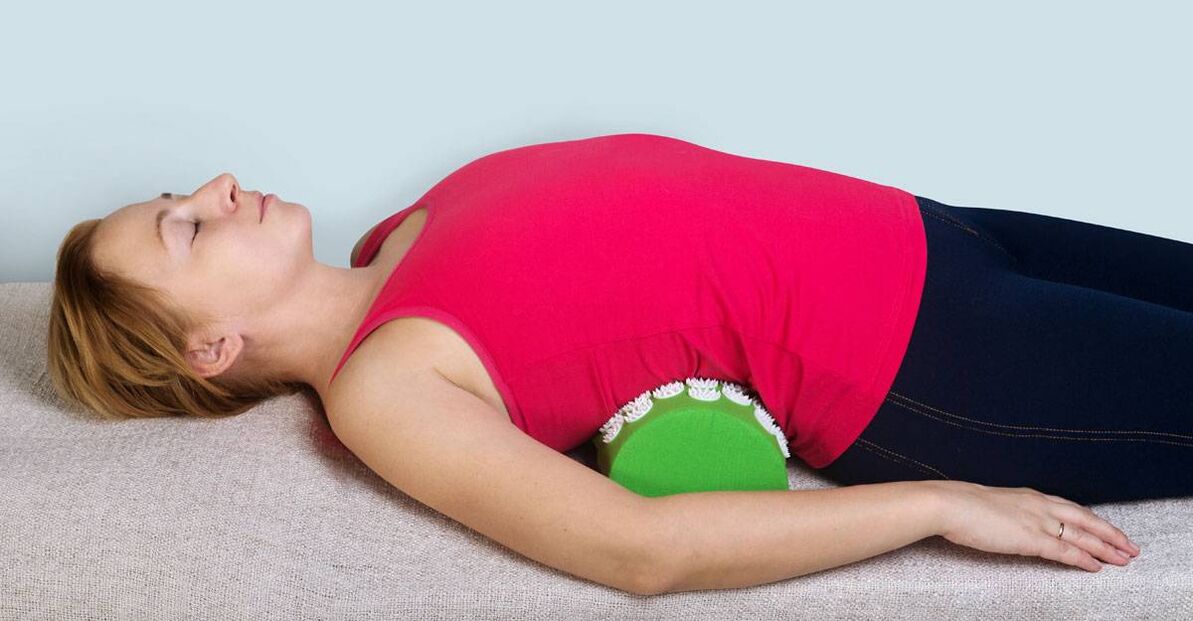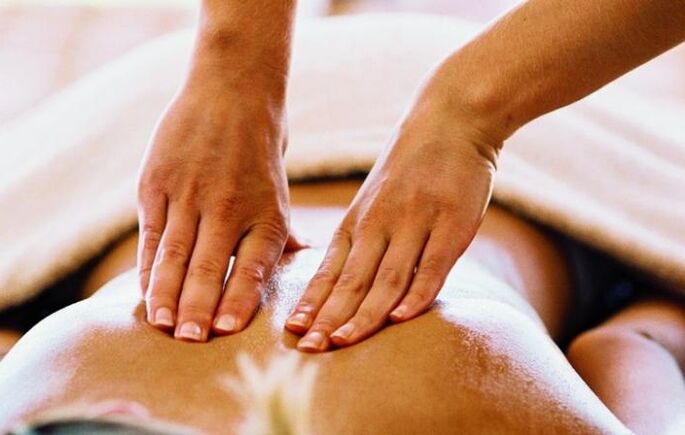With osteonecrosis of the spine, destruction of bone and cartilage tissue of one or more parts of the spine occurs. The disease is chronic and develops in almost all elderly people. This is due to the normal aging of the body.

The discs undergo atrophic changes and at what age this happens depends on many factors:
- hurt;
- diseases and overloads of the spine.
Spinal overload includes:
- walk with an arched back;
- improper sitting;
- structural features of the dorsal spine;
- insufficient nutrition of the tissues of the spine due to genetic malformations.
With osteonecrosis, the nucleus between the vertebral discs loses some water. As a result, metabolic disturbances occur in the nucleus and access to various minerals and vitamins is impeded.
After a while, cracks appear on the disc, it becomes flat. Next, adjacent joints and ligaments begin to become affected, forming tissue inflammation. Due to the inflammation, the adjacent vertebrae are displaced. This is very dangerous with the appearance of lens symptoms: pain along the affected nerve.
It is also possible that the appearance of a herniated disc and, as a result, she can cause compression on the spinal cord. Osteonecrosis is characterized by the appearance of osteoblasts - bone growths on the vertebral bodies. These tumors can compress the spinal cord and cause lens syndrome.
Normally, the neck and lumbar regions are susceptible to osteonecrosis.
Cervical bone necrosis
Reason:
- sports activities (weightlifting);
- excess weight;
- metabolic disease;
- sedentary work (programmer, accountant, driver, etc. );
- flat feet;
- spinal cord injury;
- Hypothermia.
Symptom
The main symptom of cervical spondylosis is pain in the head and neck. A person is worried about severe headaches, pain in the neck, radiating down the arm, pain in the sternum. Patients may complain of low back pain - a sharp pain in the neck, muscle stiffness, and limited range of motion.
In addition, a person may hear a crackling sound when turning their neck. Due to pinched nerves and blood vessels, a person may experience numbness of the tongue and fingertips. Patients will complain of decreased hearing and vision, high blood pressure, and muscle weakness in the arms and legs.
Bone necrosis in the chest
This type of osteonecrosis is quite rare. This is due to the anatomical structure of the thoracic spine. It consists of 12 vertebrae, which are connected to the ribs through joints. In front, the ribs are connected by the sternum. Thus, an excellent skeleton is created from the spine, sternum and ribs, which protects the internal organs from various injuries.
The vertebrae of the thoracic region are low in height and have long spiny processes, located one above the other, resembling shingles. Due to the structure, this part of the spine has a low mobility. The intervertebral discs of the thoracic region are rarely injured.
Reasons for the formation of this type of osteonecrosis:
- unreasonable load distribution;
- delay in the nutrition of the intervertebral discs;
- sedentary work;
- presence of scoliosis.
Symptom
As with other types, pain is the leading symptom of thoracic osteonecrosis.
But with osteonecrosis in the chest, the pain can be different. Back pain - persistent discomfort and mild pain along the thoracic vertebrae. The pain can affect the cervix and lower back.
Dorsago is one of the signs of thoracic osteonecrosis, in which the pain presents as a throbbing pain. Its nature is intense, acute, leading to shortness of breath and restriction of muscle movements. In addition to pain, patients may experience chest tightness, decreased sexual function, and pain in the heart, kidneys, and stomach.
Is there any danger to the thoracic region?
The spine is designed to narrow in the thoracic region, so hernias arising from bone degeneration will quickly lead to spinal cord compression. This can easily lead to problems with the heart, pancreas, liver, and kidneys, as the chest region is connected to all of these organs by nerve fibers. That's why it's so important to see a doctor on time. He will help figure out where the signs of osteonecrosis bothering you are coming from and will administer effective treatment.
Lumbar bone tumor
Lumbar osteosarcoma occurs from lifting heavy objects. Normally, in the center of the disc there is a nucleus that contains a large amount of water. Due to the fluid, the core becomes slightly compressed, and to break, a compressive force of 500 kg is required.
However, the disc affected by bone resorption becomes weaker and requires only 200 kg to break it. If a 70 kg person lifts a 15 kg load in a flexed position, and for the spine this is a load of 200 kg, the disc may rupture. That's why the first symptoms of spondylolisthesis appear when lifting weights.
Symptom
- pain in the lower back;
- inability to move in the lower back;
- sleep disorders;
- irritability;
- weariness;
- unable to meet household needs;
- decreased sexual function in men;
- violation of the menstrual cycle;
- cold foot syndrome.
With the transition of osteonecrosis to the sacral region, the patient experiences pain in the renal region and a violation of urination.
Diagnose
Osteosarcoma is treated by a neurologist. To begin with, he examines the spine, drawing attention to the presence of scoliosis. After feeling, the doctor will be able to understand how the spine, tendons, and nerves are affected.
After the neurologist suspects osteonecrosis of the spine, he will refer the patient for further examination. This includes x-ray examination, magnetic resonance imaging. If there is suspicion of disc destruction, discography is performed. It is also prescribed to determine the extent of damage to nerve pathways.
In general, it is difficult to diagnose osteonecrosis of the spine. After all, a person can complain of pain in the heart, liver, kidneys, pancreas or sexual dysfunction. However, with a thorough examination, an experienced doctor will be able to suspect this disease and prescribe the correct treatment.
Treatment
Treatment of osteosarcoma is a very long and difficult process. In the acute phase, the patient needs the rest of the affected segment. If the cervical spine is affected, the patient should wear a Shaants collar. If you have low back pain, you need to stay in bed. It is best to take the patient to the hospital. Only there can he fully implement the assigned regimen. Such a patient's bed should be hard. For this, a wooden board is placed under the mattress.
Medicines for treatment
As mentioned above, the main symptom of the disease is pain. Therefore, the patient is prescribed non-steroidal anti-inflammatory drugs to relieve pain and other symptoms of osteonecrosis.
Unfortunately, long-term use of these drugs causes damage to the mucous membrane of the gastrointestinal tract, and the patient develops the following symptoms:
- nausea;
- vomiting;
- stomachache;
- feeling of heaviness in the abdomen.
Stomach ulcers can also get worse or develop stomach bleeding. Therefore, before using these drugs, you should consult your doctor. If the pain from osteonecrosis persists for 3 months, antidepressants will be prescribed along with these medications. It has been found that, in addition to the sedative effect, they also have the ability to reduce pain.
All drugs can be classified as symptomatic therapy. They will help relieve the pain, but they will not help the person to heal on their own.
Chondroprotectors are prescribed for the restoration of discs and cartilage. These drugs improve the metabolism of connective tissue and help restore cartilage. The drug is taken for a long time, on average - 4-6 months.
In addition to restoring tissues and improving their metabolism, these drugs also have an analgesic effect. Another group of drugs that are necessary for the process of bone resorption of the spine are drugs that improve blood circulation, their effect is to help dilate blood vessels, and if thioctic acid is used in combination with it, the metabolism of nerve cells. human nervous system will be improved.
For any disease, the patient also needs calcium supplements. It will restore the functioning of bone tissues, increase the strength of ligaments and tendons, and prevent osteoporosis - a disease that accompanies osteonecrosis.
Physical therapy

The load on the spine will improve the patient's condition. But you need to perform the exercises extremely carefully. In the acute period, physical education is contraindicated. Only when the pain subsides can you begin to exercise a little.
Exercise will improve blood circulation in the spine and strengthen the muscles. Due to the circulation of blood, metabolism will improve and the process of restoring damaged discs will begin. But you also have to remember that classes must be taken regularly, otherwise there will be no results.
Exercises for injuries of the cervical spine
- Lie on your back and straighten your back. Place one hand on your stomach and the other on your chest and inhale, hold your breath for 10 minutes, then exhale and relax. The duration of the exercise is from 3 to 5 minutes. You need to do it 3-5 times per day.
- Lie on your stomach and straighten your legs. Lying on your stomach and legs, you need to raise your head and upper chest. Do the exercise for 3-5 minutes with 30-second intervals.
- Lie on your back and bend your knees. In this position, rotate your body to the right and left. Do the exercise for 3-5 minutes with 30-second intervals.
Exercises for thoracic injuries
- Lie down. Place your hands on the floor and bend backwards. Hold this pose for 5-10 seconds. Do the exercise for 3-5 minutes with 20-second intervals.
- Lay up. Raise your head and legs ("boat"). Hold for 10-20 seconds. Do the exercise for 3-5 minutes with 20-second intervals.
Exercises for injuries of the lumbar spine
- Lie on your back, bend your knees and bring them toward your chest. Swing back and forth and roll from back to the sacrum and back. Swing up to 2 minutes. Then you need to calmly lie down and relax.
- You need to walk on all fours and bend as much as you can. Do the exercise for 3-5 minutes with 20-second intervals.
- While standing, imagine rotating the hoop for 2 to 3 minutes. Exercise 10 times per day.
Surgery
In the absence of effect from conservative treatment and complications of osteonecrosis, surgical treatment is indicated. During spinal stabilization, pressure on the spinal cord and roots is removed. If a person has a herniated disc, it is removed. Since this operation can damage the spinal cord and nerves, it is only done for important reasons.
Physiotherapy treatment
The appointment of physiotherapeutic procedures has a positive effect on the course of the disease and accelerates the recovery process. With osteonecrosis, it is allowed:

- visit a sauna or bath;
- swimming in the pool;
- Massage;
- paraffin therapy;
- manual therapy;
- laser therapy;
- different bathrooms;
- mud therapy;
- electrophoresis with anti-inflammatory drugs or muscle relaxants;
- acupuncture therapy;
- darson festival.
All these procedures help to improve blood circulation in the affected area, allowing the muscles to relax and relax the whole body. Physiotherapy procedures are indicated in the rehabilitation phase, when the patient is not disturbed by severe pain.
Preventive
No one is immune to osteonecrosis. After all, we all age, and our entire bodies age with us. In order for this disease not to spoil your plans, you need to engage in sports from a young age. Moderate physical activity improves blood circulation and normal metabolism. In addition, it also trains the muscles that protect the spine. To prevent osteonecrosis, each person should:
- eat right - supplement with vitamins and minerals necessary for the body;
- refuse bad habits;
- participate in physical education;
- Do not flatter;
- protect your back from hypothermia;
- do not lift too heavy objects;
- Contrasting and temperamental baths;
- avoid stress.
It is especially important for people with this disease to follow all the recommendations, because their failure will lead to an exacerbation. If back pain persists for a long time, you need to seek the help of a specialist. Only a doctor can make an accurate diagnosis and prescribe treatment.
Do not delay the examination, because it is better to treat the disease in the early stages. In addition, do not self-medicate - any drug has its own contraindications that you may not be aware of. Strictly follow all the doctor's recommendations and then the disease will soon be in remission!












































